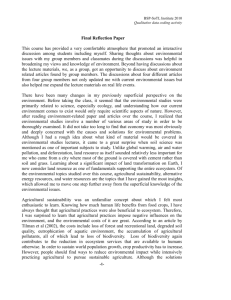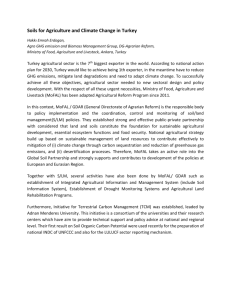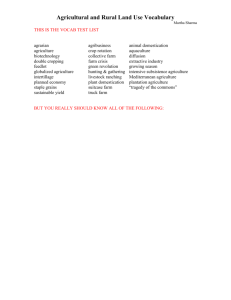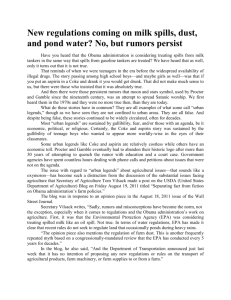History of Agriculture Communications
advertisement
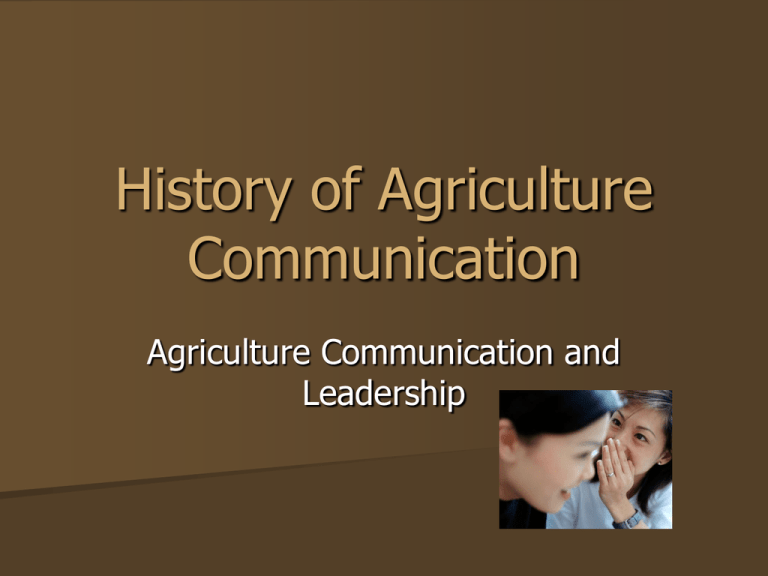
History of Agriculture Communication Agriculture Communication and Leadership Communication Need words, body language, actions or gestures to communicate. Communication The process by which information is exchanged by individuals through a common system Types of Communication Dyadic (two-person) – most informal exchanges between two people – Close proximity – Both people send and receive messages – Includes verbal and nonverbal stimulus Small Group – three or more members of a group Types of Communication Public – “Public” places, formal and structured, speaker addresses large group in an event as a speaker Mass – most formal and most expensive, may include media Communication Models One Way- information travels from one source to a second Communication Models Interactive – information is exchanged between two sources, includes feedback and interaction Role of Ag Com Year 2000 – 281.4 million people in the United States – 1.8% Ag Producers – > 98% Urban/Suburban area Role of Ag Com (facts) American agriculture is a high priority when considering national security American food supply is safest in the world Americans live longer Americans are 3 inches taller than they were in 1900 Role of Ag Com Is the American public aware of this information? What seems to be the problem? Business of agriculture is a huge success … – the communication of agriculture is NOT. % of jobs in the U.S. that are related to agriculture: 23% Role of Ag Com Agriculture literacy has been left to the agricultural producer Agriculture History Crop – any plant humans us for their own needs Livestock – any animal humans use for their own needs Weed – any plant that is out of place Pest – any animal that is out of place Agriculture History Agriculture began in the valleys of the – Tigris – Euphrates – Nile Earliest records date back 6,000-8,000 years Chinese farmers were highly respected in their communities Agriculture History Crop production allowed people to stay in one location With feed, livestock domestication became possible Because of farming and ranching … – Civilizations were founded – Cultures were developed – Specialization was developed Agricultural Communication History 3000 BC – Appearance of the plow 1793 – Eli Whitney invented the cotton gin 1810 – First agriculture magazine, Agricultural Museum, was established in District of Columbia 1811 – First agricultural production fair held in U.S. (Massachusetts) 1819 – Magazine American Farmer was released in wide circulation Agricultural Communication History 1862 - The Morrill Act was passed – Established land grant universities – AGRICULTURE SCHOOLS!!! 1905 – First class in ag journalism offered at Iowa State University 1908 – Agricultural Journalism department created at University of Wisconsin, Madison 1917 – The Smith-Hughes Act passed – Established vocational agriculture classes Agricultural Communication History 1920 – Iowa State University offered B.S. in Agricultural Journalism 1921 – First farm market news radio report broadcast (KDKA, Pittsburgh) 1944 – National Association of Farm Broadcasters organized 1952 – Newspaper Farm Editors of America established Agricultural Communication History 1970 – Agriculture Communicators of Tomorrow (ACT) established – University organization for Ag Communication and Journalism majors 2006 – Utah State University offered a B.S. in Agriculture Communication and Journalism Preparing Graphics Photo Job Sheet





